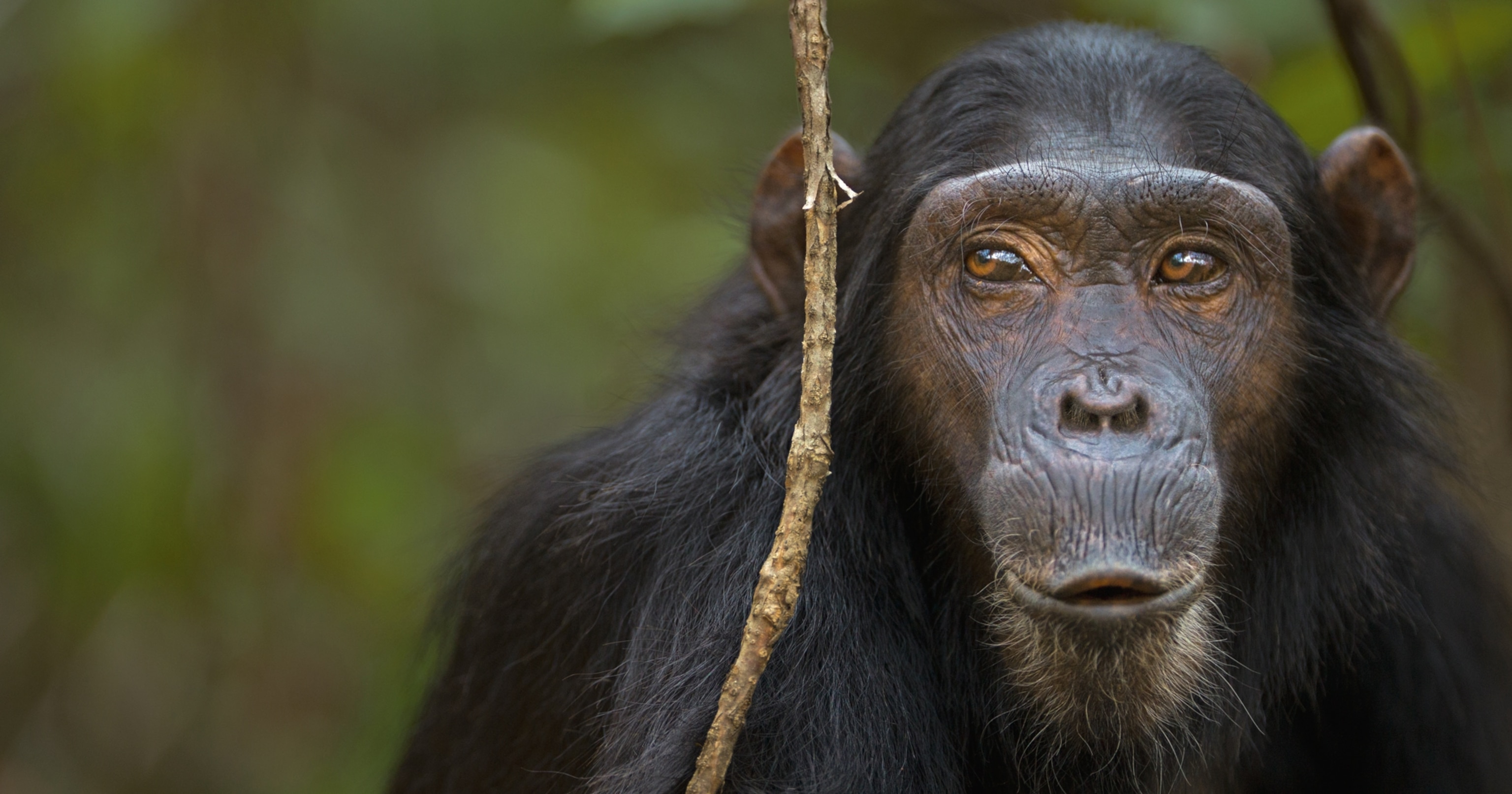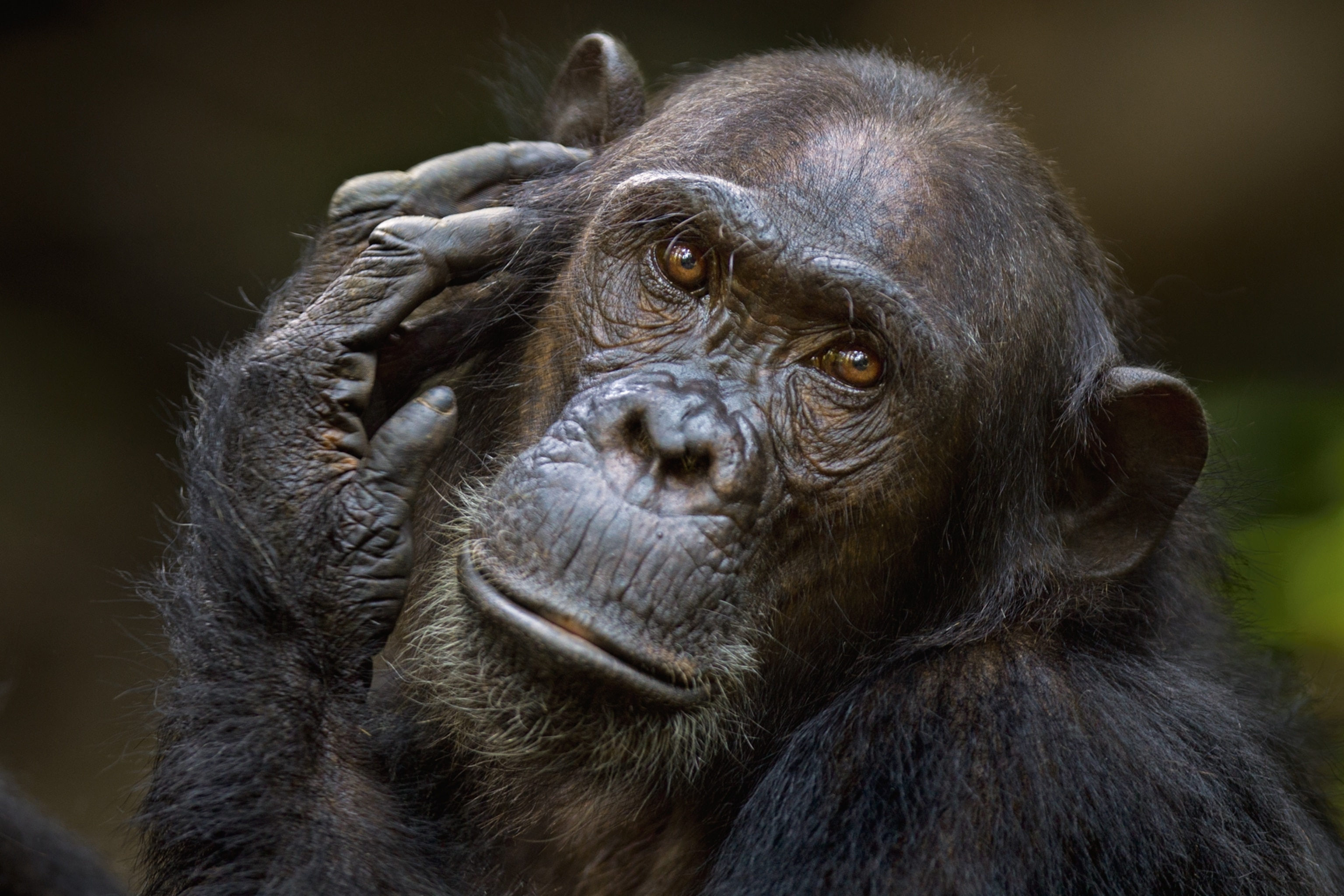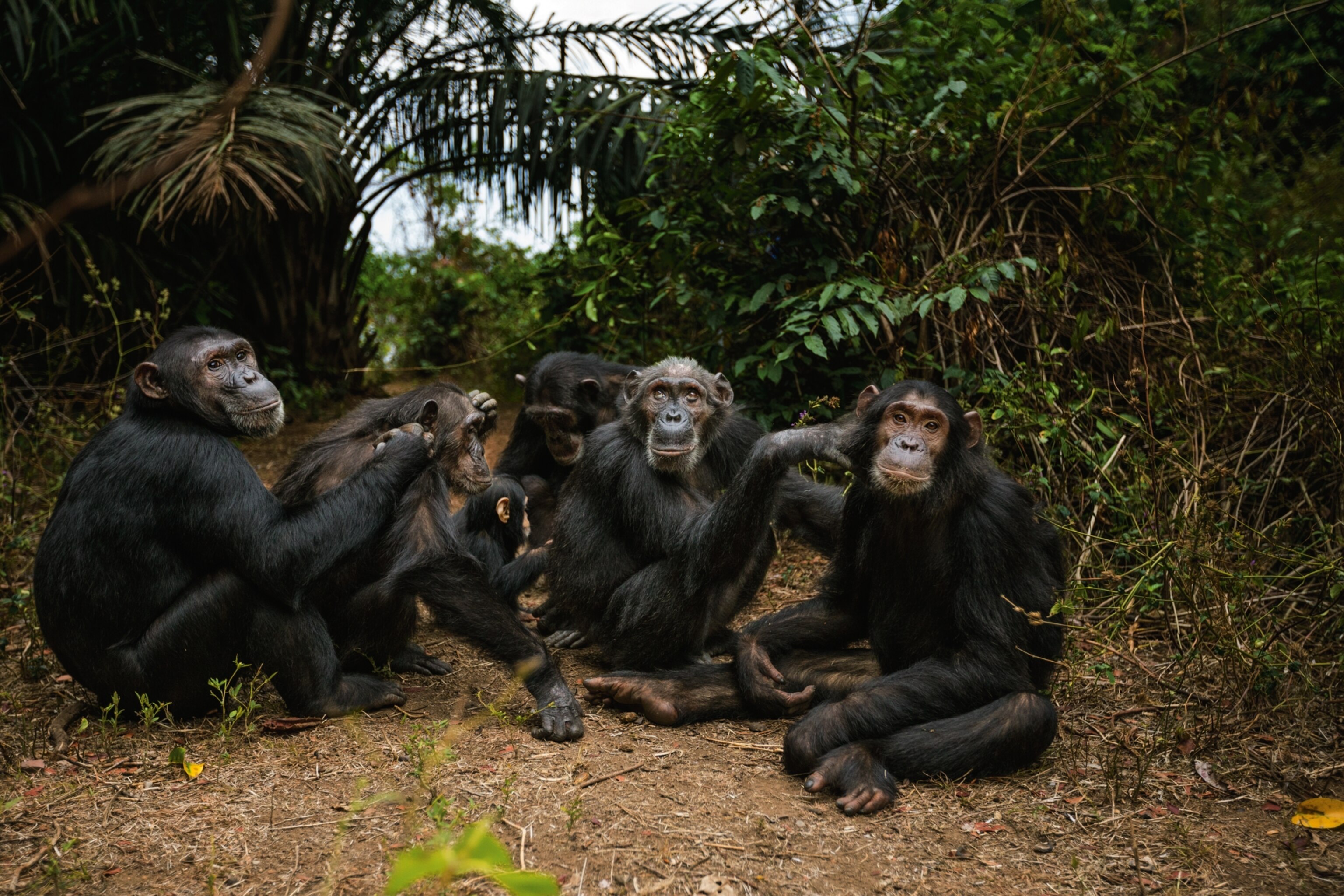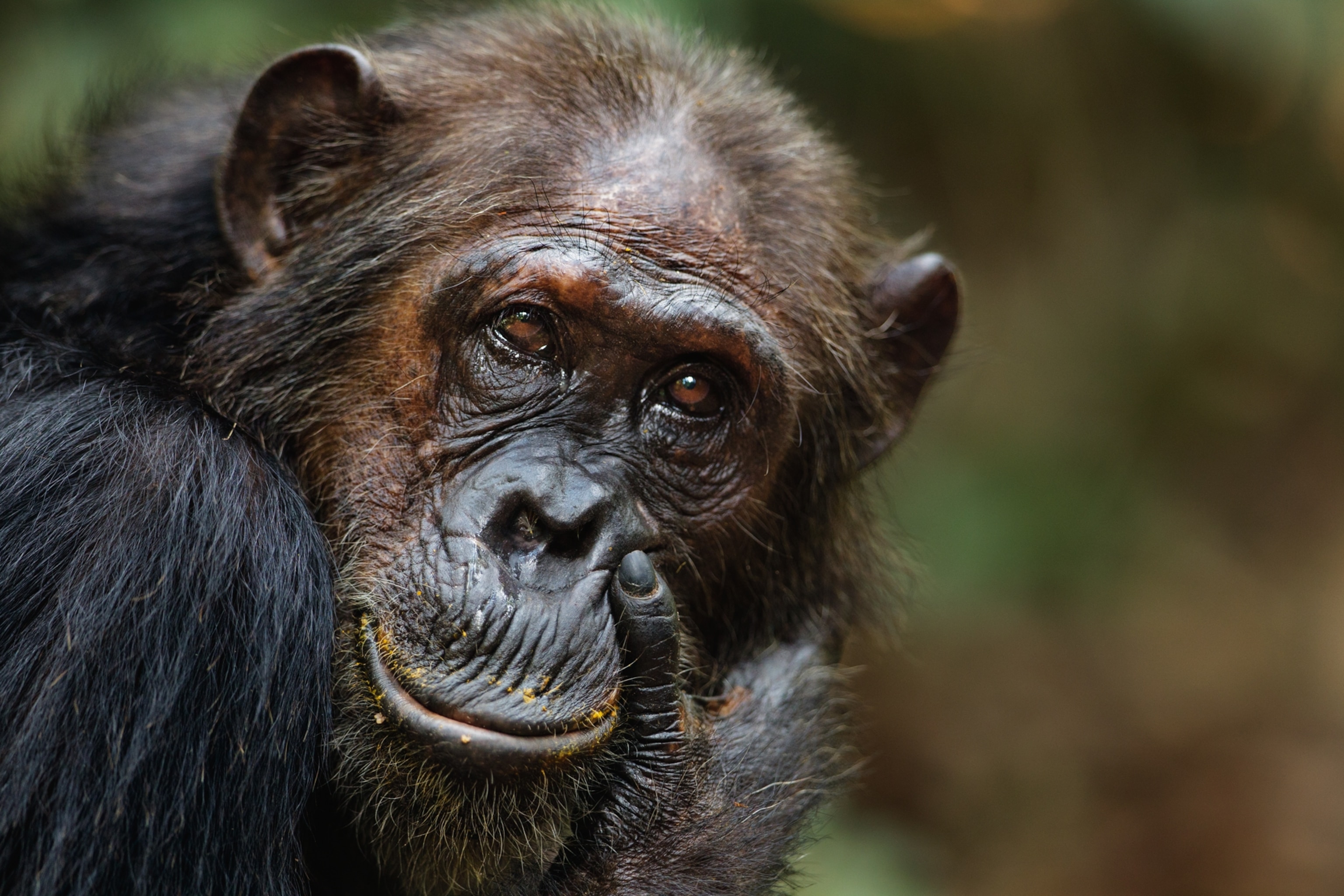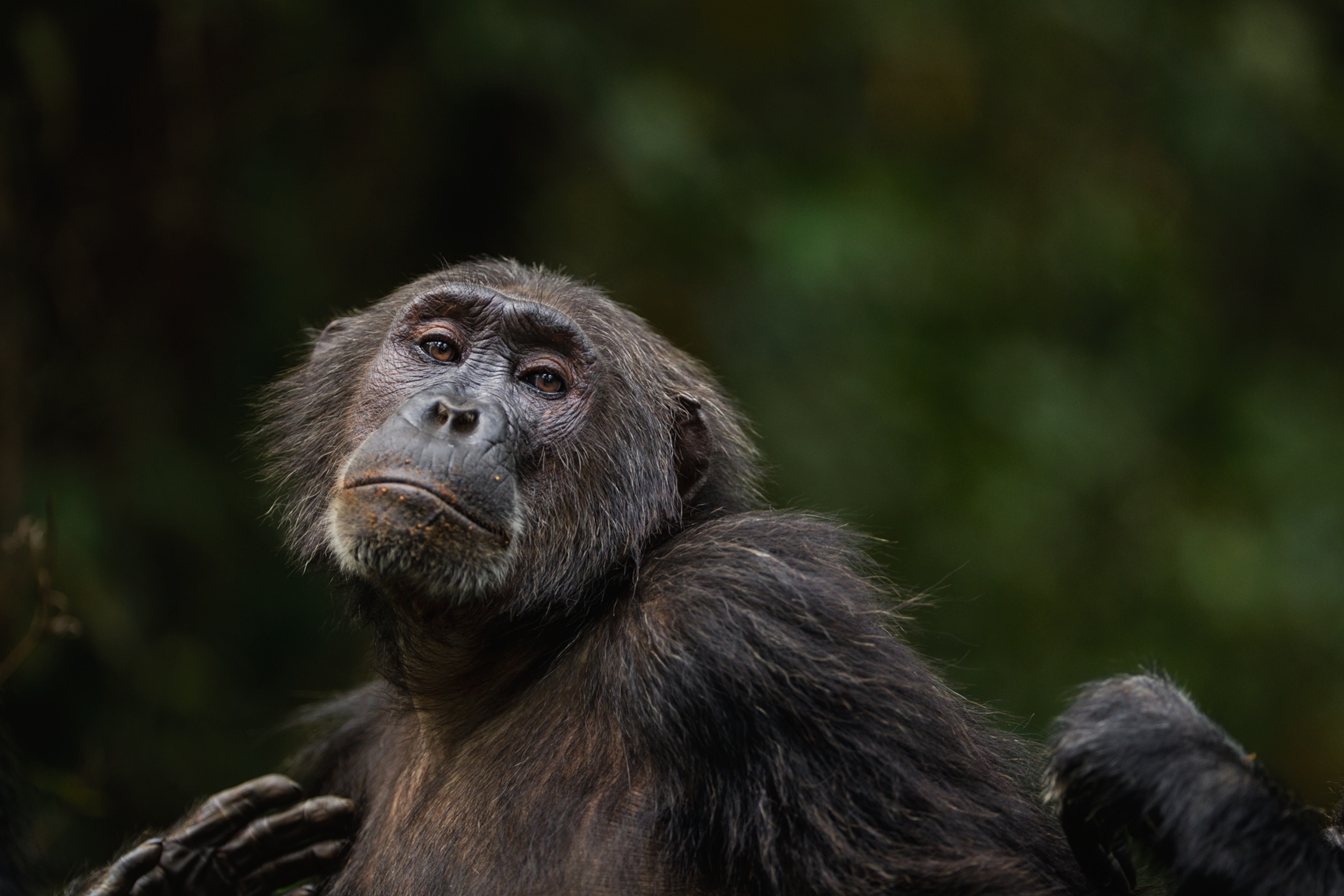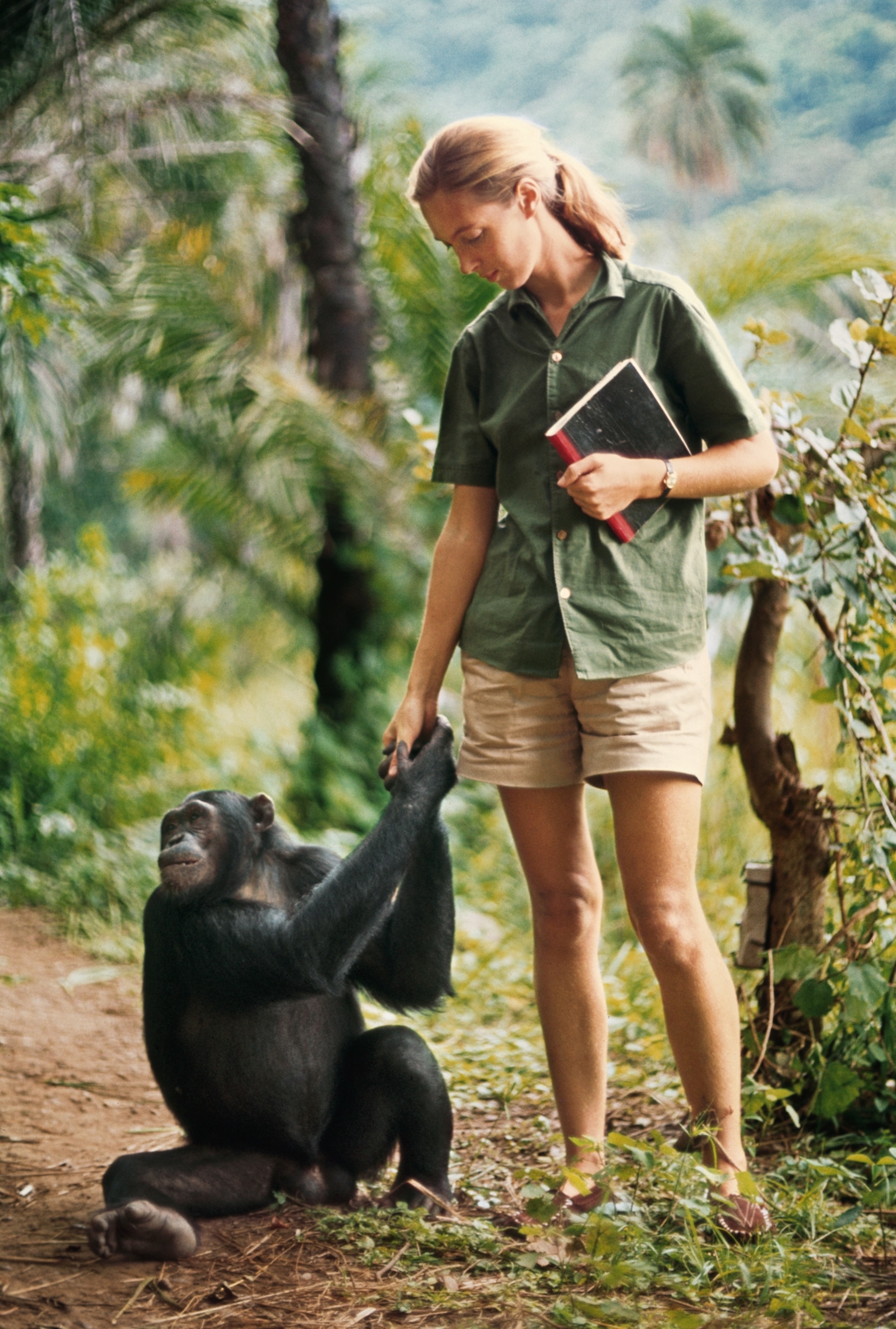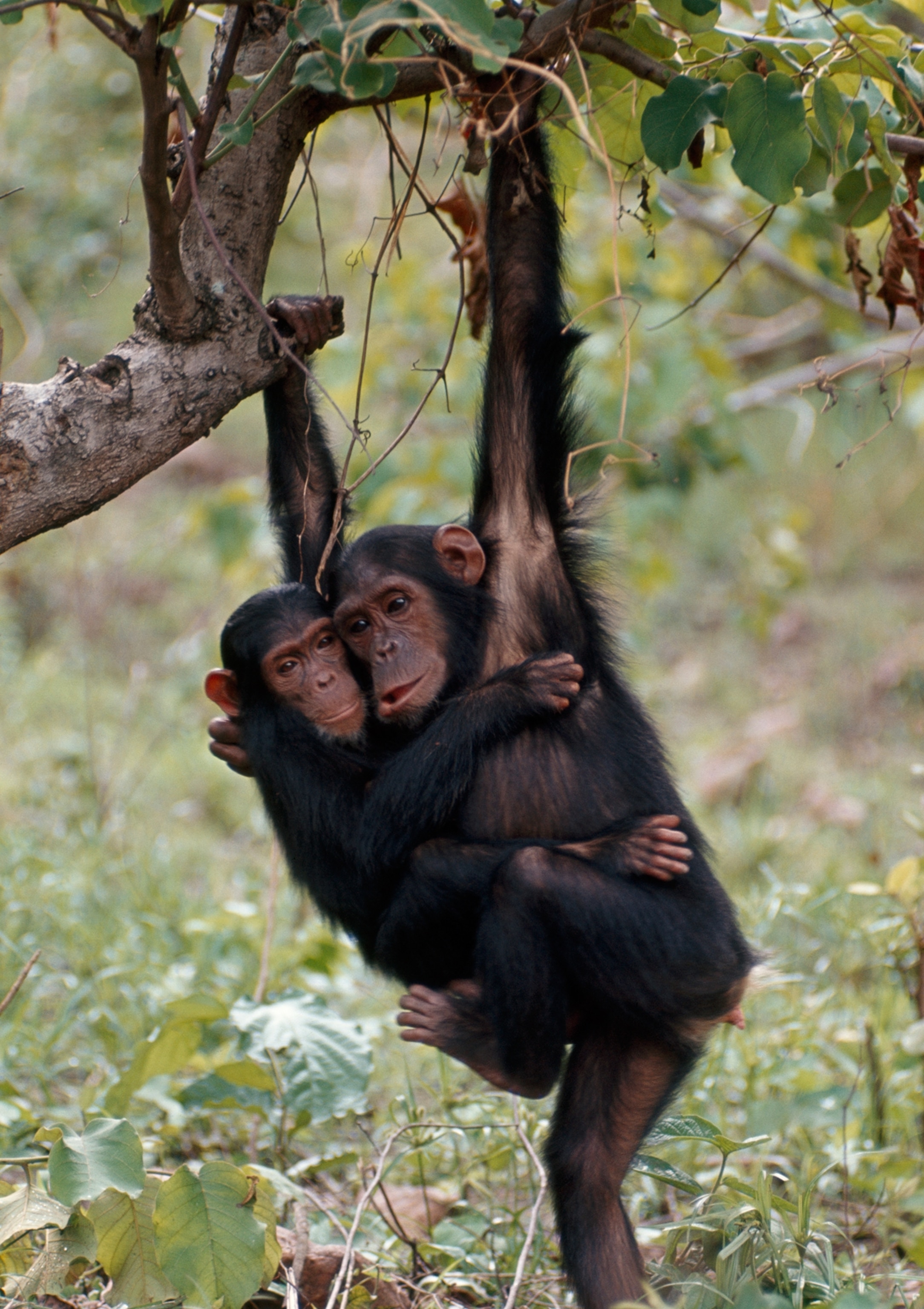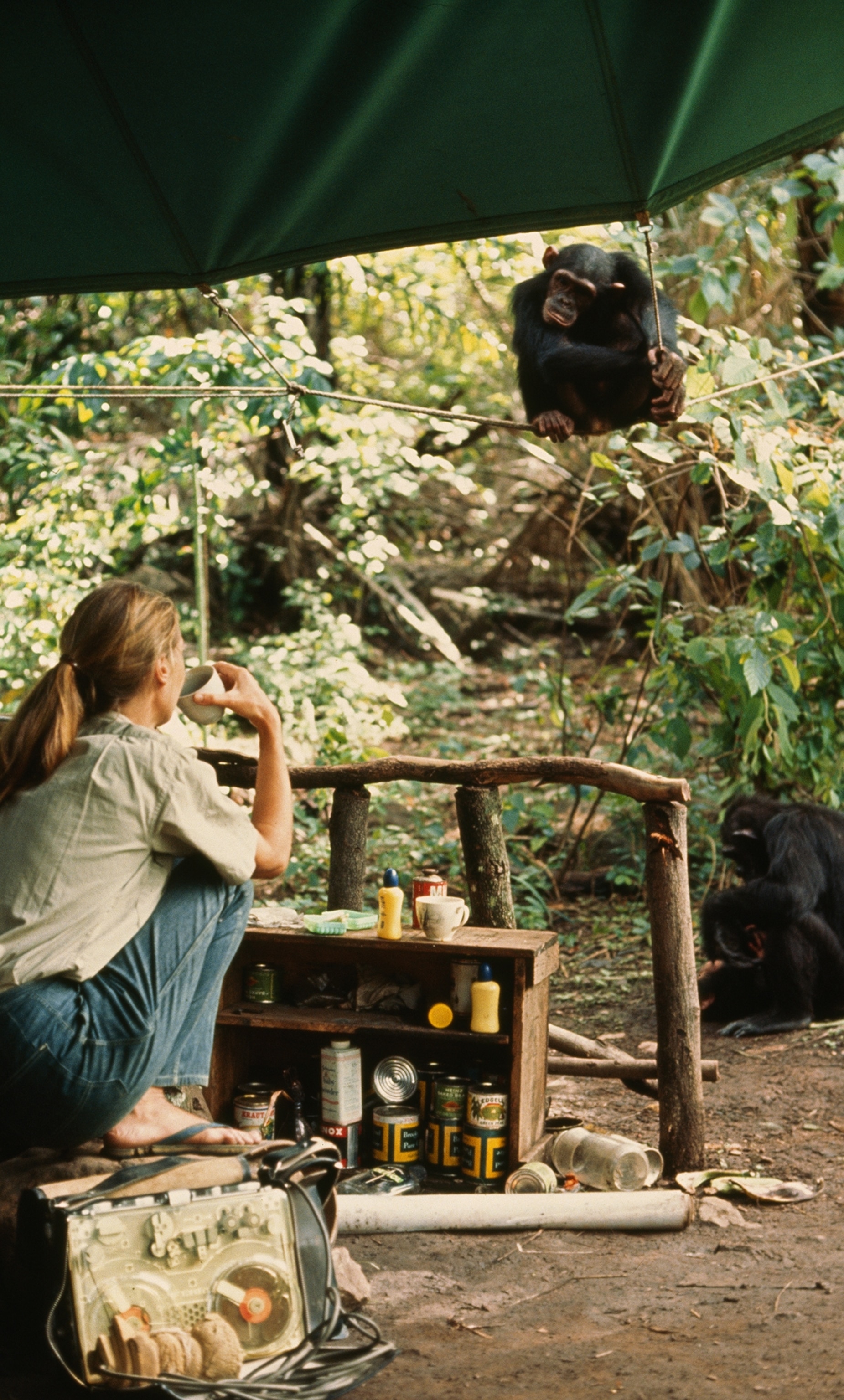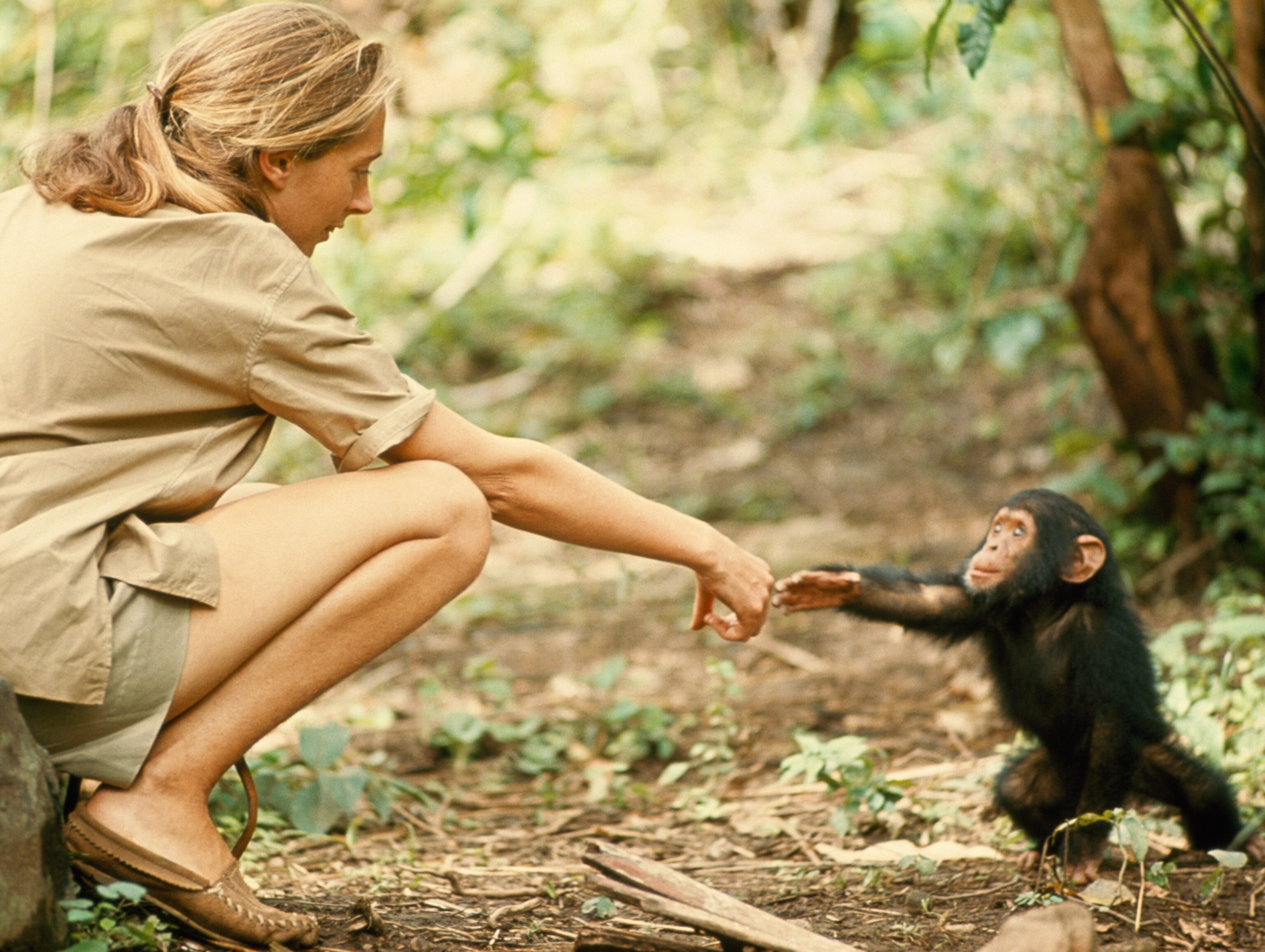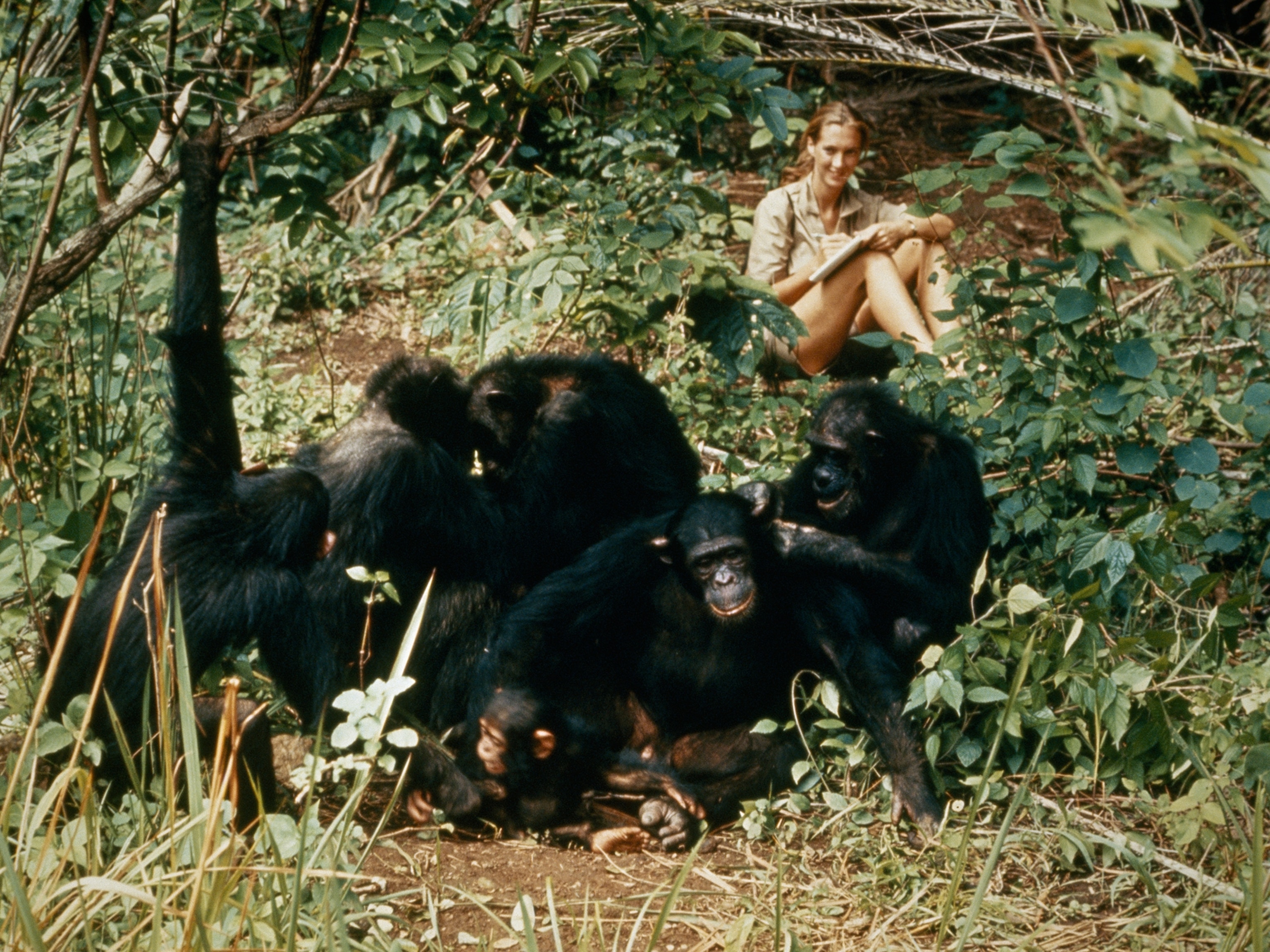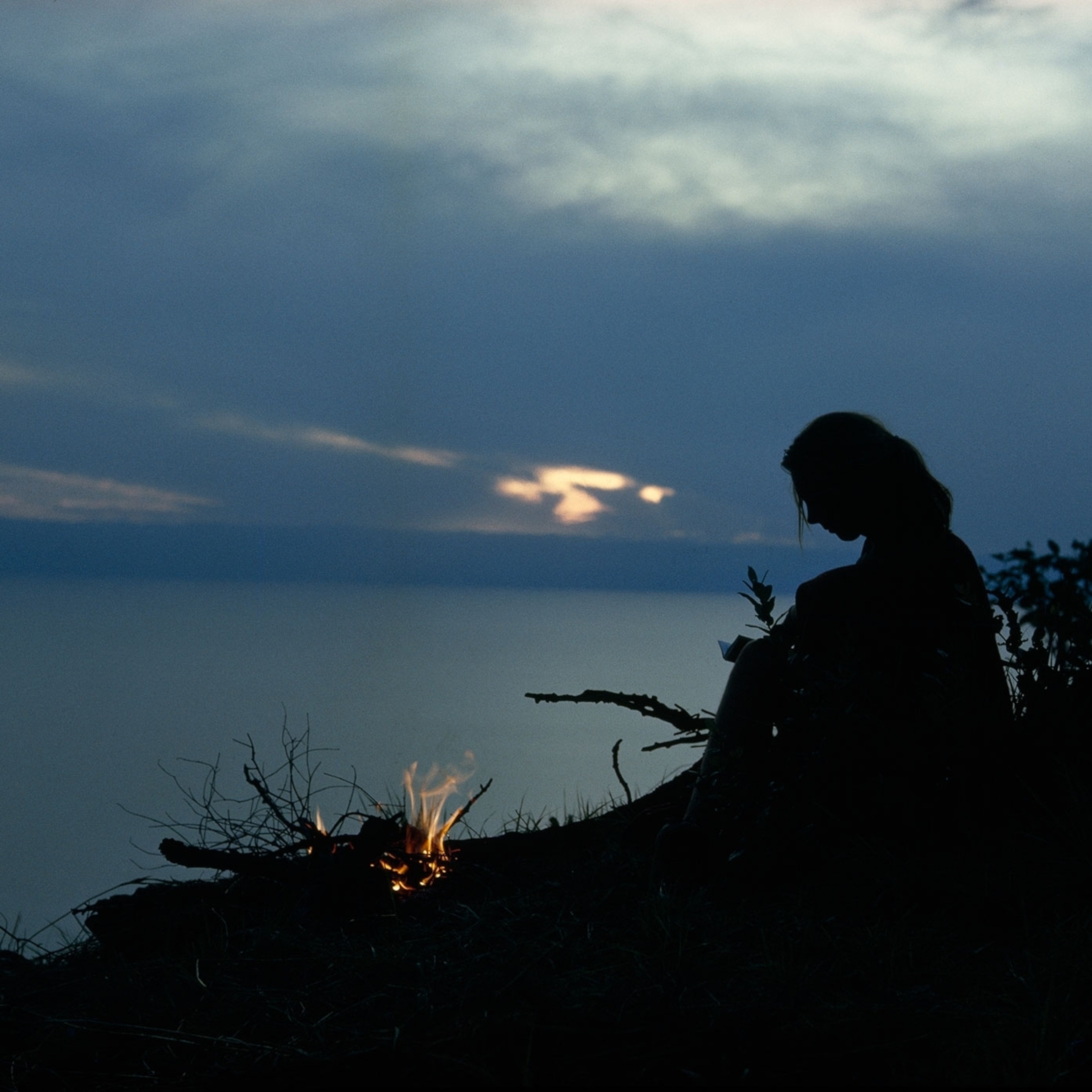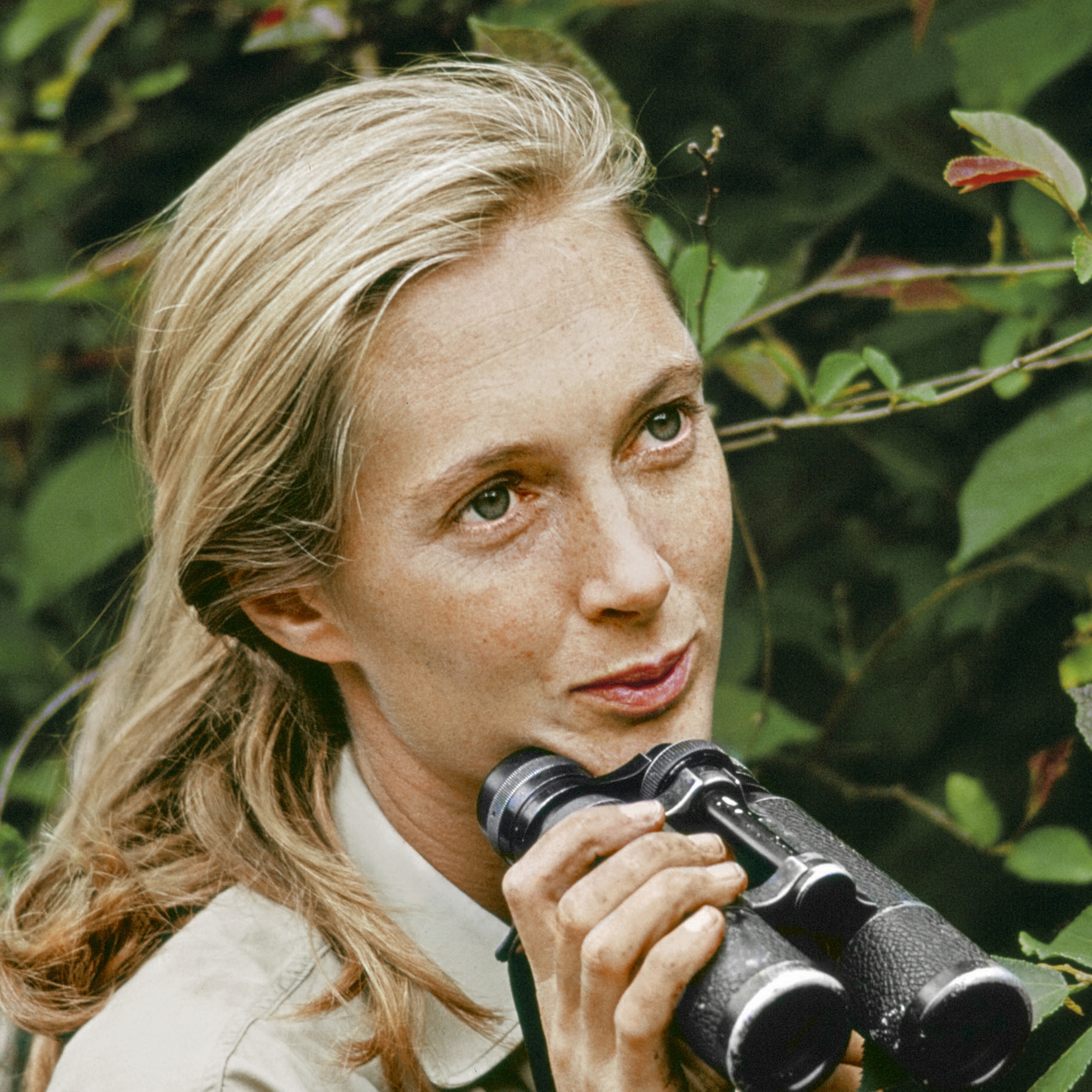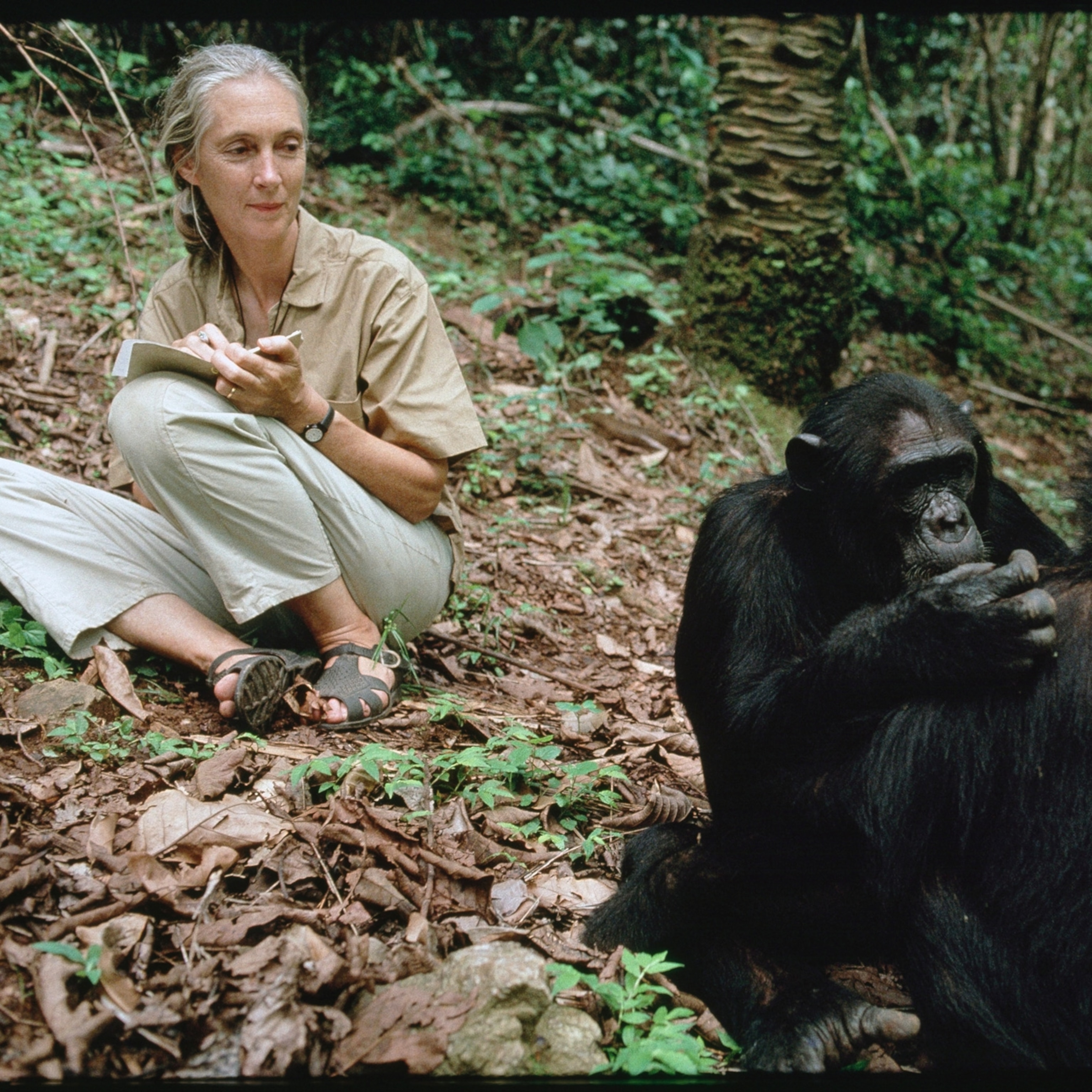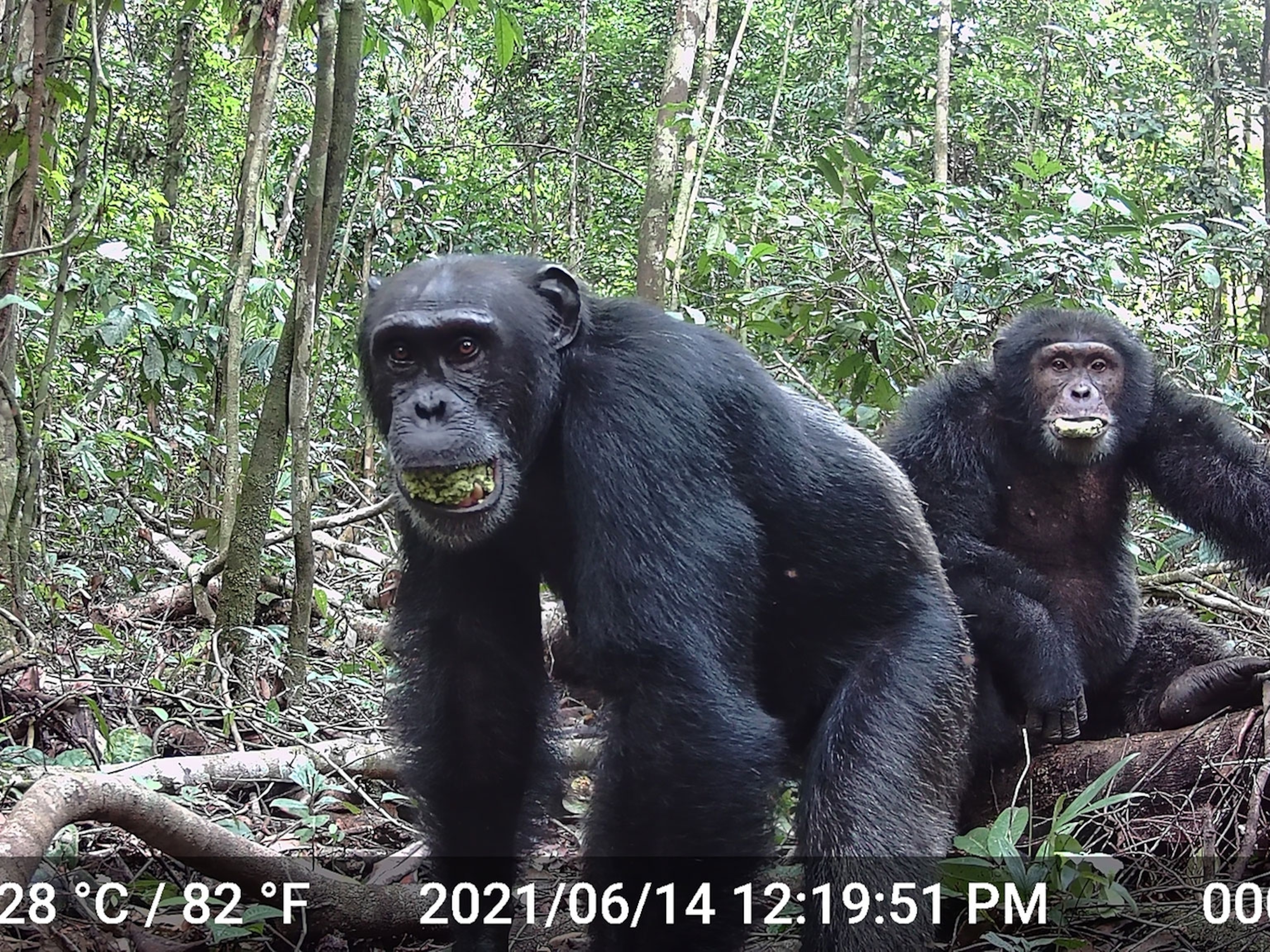Gombe Family Album
Celebrating her 80th year, Jane Goodall reflects on her career of getting to know unforgettable chimps.
On April 3, 2014, Jane Goodall turned 80. The iconic blond ponytail has gone gray, but the sparkle of intelligence, sly humor, and fierce dedication still shines from her hazel eyes. My conversation with Jane began in connection with the 50th anniversary of the Gombe, Tanzania, chimp study (see “Jane: Fifty Years at Gombe,” October 2010) and resumed this year at National Geographic, where we riffled through Anup Shah’s photographs and Jane’s memories. Her work with chimps began in July 1960, and within months she had become familiar with several individuals. She soon made three major discoveries: Chimpanzees use tools, chimpanzees make tools, chimpanzees can be predators and eat meat. She also began to recognize the degree of individual difference—unique personality traits—between one chimp and another. Then, in 1962, she took leave to earn a Ph.D. in ethology (animal behavior) at Cambridge University.
JANE GOODALL In those days, you know, ethology was really trying to prove that it was a hard science. Which of course it can’t really be. Not unless you’re very invasive. And so, although individual differences were sort of admitted, they were not discussed.
DAVID QUAMMEN Academic ethology didn’t like to talk about individual differences. It liked patterns.
JG It was very reductionist.
DQ Reducing individuals and their behavior to data and the patterns that can be drawn from data.
JG Right. And anecdotes were absolutely the worst sin.
DQ And you came along and wanted to talk about individuals, and about personalities and about character.
JG I wanted to talk about emotions. I wanted to talk about the mind, and thoughts.
DQ How did that play out at Cambridge?
The answer was, not well. Her professors disapproved of her approach.
JG It was a bit shocking to be told I’d done everything wrong. Everything. I shouldn’t have given them names. I couldn’t talk about their personalities, their minds, or their feelings. Those are unique to us. Fortunately, I thought back to my first teacher, when I was a child, who taught me that that wasn’t true. And that was my dog, Rusty. You cannot share your life in a meaningful way with any kind of animal with a reasonably well developed brain and not realize that animals have personalities.
Scenes From the Gombe Archives
So Jane and I talk not about patterns or ideas, but about the individual characters of certain Gombe chimps, including some in the photos on these pages.
DQ How would you describe David Greybeard?
JG His personality was very calm. Very determined. When he was determined, his lower lip came out. Like that.
She pouts out her lip, mimicking the gesture. I ask about Goliath, the alpha male of the community during her first years.
JG Goliath was tempestuous. He was very brave. I say “brave” advisedly, because he would stand up to anyone challenging him, even though they were bigger, even though there were two of them. So he wasn’t calm at all, like David.
DQ What sort of relationship did they have with each other?
JG I think they must have been siblings. They were just together so often. And David was very reassuring to Goliath when he was being challenged. It was so awful that Goliath was killed by the other males when the group split.
In 1964 a male named Mike used wits over strength to rise to the top.
JG Mike with his kerosene cans.
DQ Mike had found a new way to be an alpha, right?
JG Mmm.
DQ Tell me about that.
JG Well, he was highly motivated. That was something else I wasn’t allowed to talk about.
DQ Motivation.
JG He was motivated to rise up the hierarchy. But there were 11 other males all ranking higher than him at the beginning. And he’d lost two of his canines. He wasn’t a spring chicken. He was, I suppose, a bit older than David. Anyway, he picked up and used as a prop one of these empty tin cans, four-gallon cans, and he found it made wonderful noise. And the chimps whom he was displaying towards ran out of his way. Mike just somehow realized that he could take advantage of this. He learned to keep three of them [empty kerosene cans] ahead of him, kicking and hitting them. I remember this one group—five males, including top-ranking Goliath—and normally Mike was very afraid of all of them. But with these three cans, he charged straight toward them and they all ran away. And then he sat [she makes a panting noise], and they all came and groomed him.
DQ And that was the beginning of his being the alpha.
JG Yes. It took him only about four months to get to the top.
I show her an old photo of herself in those early years, with a notebook, one chimp clutching her right hand with both of his.
JG There’s our most intelligent chimp ever, right there. Figan.
DQ In what ways did that show?
JG It showed in so many ways.
She tells an elaborate story of Figan learning to unlatch the box in which she kept bananas. Figan and his companion Evered both learned the trick, but only Figan understood that doing it in the presence of more dominant males meant the immediate surrender of those bananas.
JG I watched him. He just sits there looking around casually, and … he’s got a foot on the handle; there’s males all around. He sits there—once it was for over half an hour—until the males left. Then he went and got the bananas.
Next we look at the big photo spread of Frodo.
JG He was a bully. He was a real bully. I mean, OK, he bullied me. Bullied a lot of people, but even as a child, he bullied the other young ones. Very often, if two were playing, if they saw Frodo come along, they stopped playing. Because they knew as soon as he joined in, he’d hurt one of them.
In adulthood Frodo deposed his own brother as alpha male, threw his weight around, and sometimes showed aggression toward humans but also restraint—as Jane herself and a videographer named Bill Wallauer had occasion to see.
JG We both knew that Frodo was not trying to kill us or really hurt us. He was just trying to demonstrate his strength. I kept saying, “Frodo, I know you’re dominant. I mean, you don’t have to prove it. I’m just a weak female,” you know. “Please.” Three times with me and twice with Bill, if he’d done what he normally does, which is push you, we would have died. Because of the slope and the rocks below. And he didn’t do it.
DQ He stopped short.
JG Yeah, he stopped short. And he did have a very sweet side with infants. To watch him playing with the young infants was charming.
So Frodo was complicated. But so were they all. I pull out, like another tarot card, an image of Gremlin.
JG She’s been my favorite chimp for ages. She’s such a good mother. And you know, she tried so hard to help her mother, Melissa, when Melissa had twins.
Twins are rare among chimps, and very difficult for a mother to nurture. Melissa lost one of her pair. Gremlin herself later raised two, a signal feat. Then, while her next offspring was still unweaned, Gremlin commandeered an infant from her own firstborn daughter, Gaia.
JG So weird. So much we still don’t understand. It was almost as though, having had two babies, she was used to having two babies. And she had a two-and-a-half-year-old and, well, that wasn’t really quite enough. So she better have another. And it was awful. She nursed him, suckled him, did everything she should. She treated him beautifully.
But there wasn’t enough milk in Gremlin for two youngsters. Gaia’s infant languished in his grandmother’s care and died.
DQ Tell me about Sparrow.
JG A survivor. She’s just another of the great matriarchs, with all these children.
DQ Is she still alive?
JG Yeah. It’s amazing.
Sparrow is the mother of seven; she’s grandmother or great-grandmother to several more. During the course of Jane’s 54-year association with Gombe, as a researcher and then a protector and advocate, there have been many more joyous moments than sorrowful ones, but in the fullness of time all good things end, as Sparrow’s life will too. David Greybeard and Goliath and Mike are long gone, Frodo more recently. Near the close of our chat, Jane recollected the death of Flo, mother of at least five, grandmother of many, the greatest and most beloved matriarch ever at Gombe.
DQ How did Flo die?
JG Crossing a stream. Very old. And she was with Flint. That was when Flint was eight but still so dependent on her. Did I cry? Yes.
DQ Did you find her?
JG I wasn’t the one who actually found her, but I saw her. And I watched—the saddest thing—I watched Flint by the body. Couldn’t understand it. Kept pulling at her hand, like he did when she was alive. Like, “Please groom me, Mum.” At one point he left her and went to a tree where they had slept together about two nights before. He climbed up very, very, very slowly, and he went slowly along the branch and came to this nest, and he stood looking at it, and he turned around and came back. It was so moving.
Flint died about three weeks later, an orphan eight-year-old, mourning his mother and mourned by Dr. Goodall, the ethologist who recognized that chimpanzees have personality and experience emotion.

